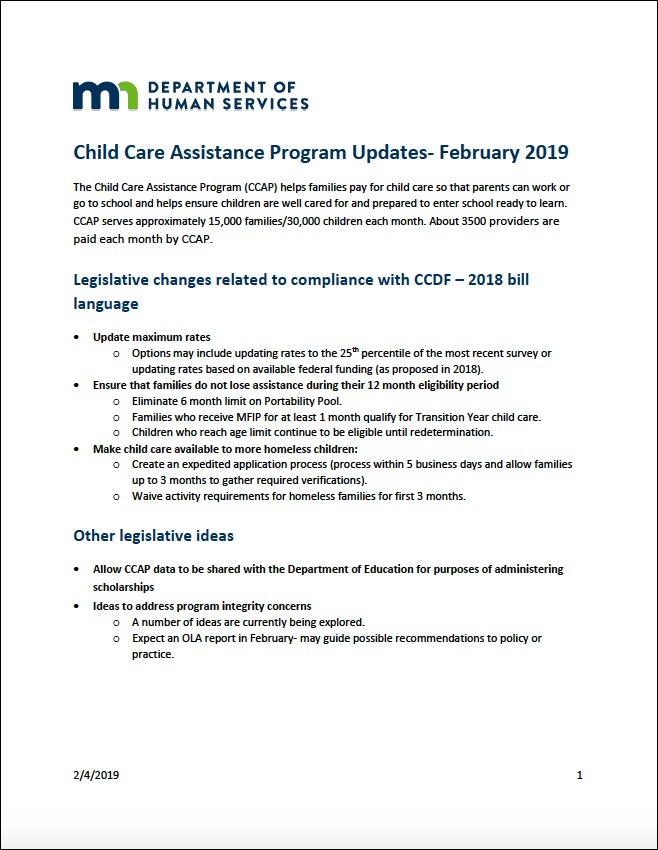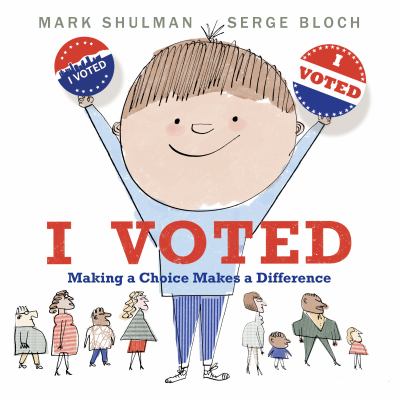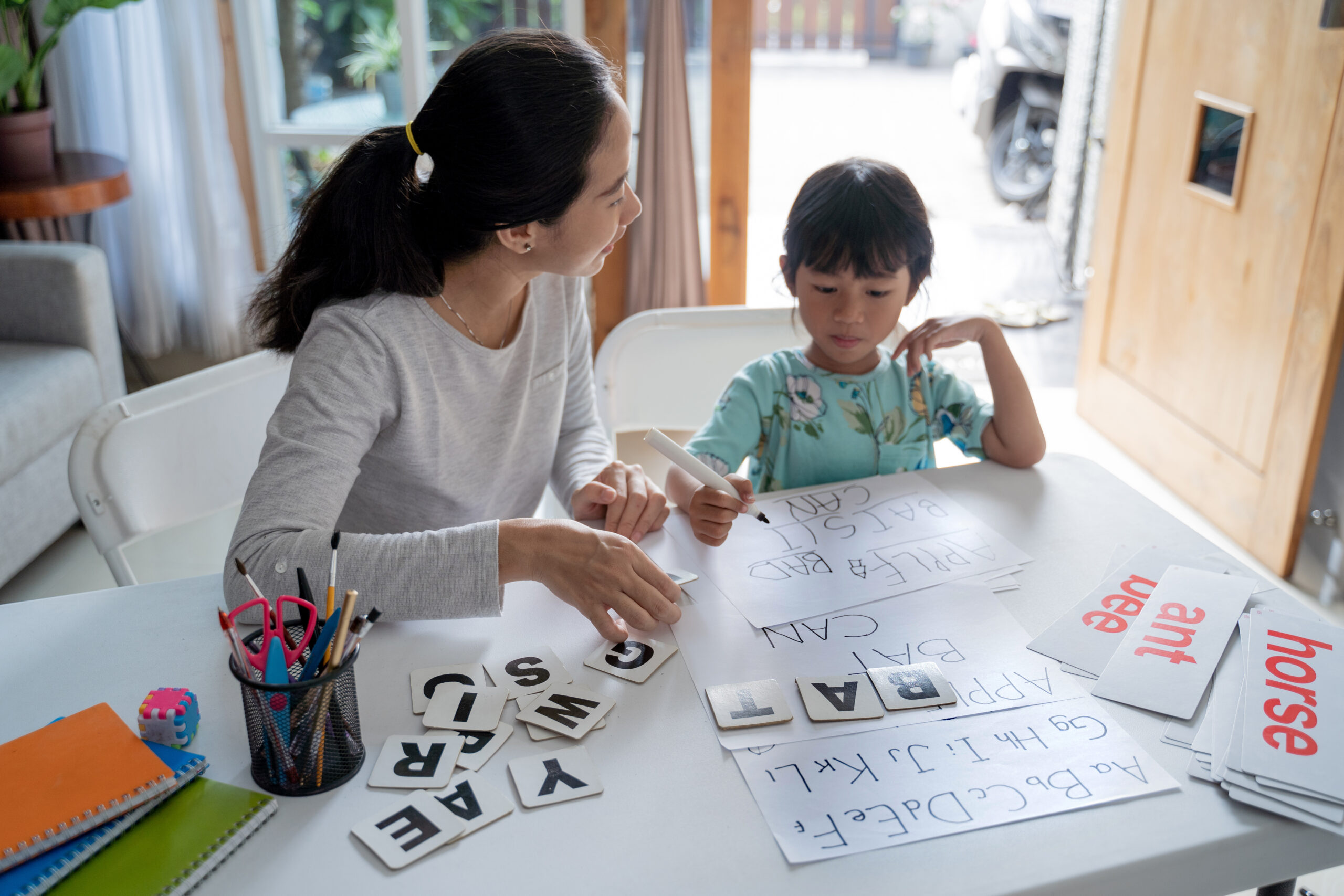By Marie Huey, Policy and Advocacy Coordinator
Staff from the Minnesota Department of Human Services (DHS) joined us for February’s Ann Kaner-Roth Policy Hour to provide updates on child care.

Cindi Yang, Director of the Child Care Services Division, gave an overview of the Preschool Development Grant. Minnesota received $4.7 million for this one-year grant. It will allow the state to make a plan for coordinated programming for children ages birth to five. This will be a collaborative effort between the Departments of Health, Human Services, and Education. The Governor’s Children’s Cabinet is helping to coordinate the effort.
The process is comprised of five main activities:
- Conduct Needs Assessment
- Develop Strategic Plan
- Design Mixed Delivery System
- Promote Best Practices
- Improve Overall Quality of Programs
For more details about what is involved at each step, refer to this handout. They plan to take an equity approach, with a focus on supporting children facing racial, economic, and geographic inequities. They will work with partners to bring a diverse group into the conversation. When conducting the needs assessment and strategic plan, they will build on past work such as the Race to the Top grant and the Early Childhood Systems Reform work group.
All states that received the planning grant will be able to apply for an implementation grant next year. That process will take place sometime in August-October and is expected to be more competitive than the first round.
Beth Fraser, Manager of Policy, Legislation & Stakeholder Engagement for Licensing Division, gave updates on their work.
One recent focus has been certification. Certification is a new classification for centers. Many of them serve school-age children, and they have to be certified in order to accept Child Care Assistance (CCAP). Licensing is working with centers to complete the new background study and implement the process for annual inspections.
The licensing division is also currently looking to update the list of items that are eligible for a fix-it ticket. A fix-it ticket can be issued for minor licensing violations that do not immediately put children at risk. The violations must be corrected within 48 hours. The DHS Commissioner has authority to make and revise the list of eligible fix-it ticket items. Fraser listed a number of items that DHS is currently considering, which you can view in the video of policy hour. If you have feedback about which items should be included, you can email them to dhs.ccc.licensing@state.mn.us.
Governor Walz will release his budget on February 19, and DHS has been discussing ideas for that process. Each commissioner shares their department’s recommendations with the Governor, who then assembles his proposal. Licensing has been discussing a variety of measures from climbing equipment requirements to use of reusable water bottles. Additionally, they have talked about proposing a license that falls somewhere between a family child care and a child care center. This could allow for flexibility, especially in Greater Minnesota, where population density isn’t always adequate for a center. Fraser noted that these ideas may or may not appear in the Governor’s budget, and many of them would require resources and long-term planning.
Laurie Possin, Child Care Assistance Program Manager, discussed what her division is currently working on and what is coming up.
Like the licensing division, CCAP is also discussing legislative ideas for the upcoming session. The main priority is to come into compliance with federal regulations. In 2017, Minnesota passed many changes to align with the reauthorized Child Care Development Block Grant (CCDBG). However, a few pieces remain. While CCAP is now operating on a 12 month redetermination schedule, there are a few provisions that would ensure greater continuity for families and children. Expediting applications for children experiencing homelessness is one of those. They would also like to ensure that children moving between counties will receive continuous care, which does not always happen right now. The largest financial component will be updating provider reimbursement rates. Currently, rates are at the 25thpercentile of the 2011 market rate survey. To be in federal compliance, rates would have to be based on the most recent survey, which is 2018. Minnesota has waivers for some of these items, but the state needs to be in compliance by October.
Another effort that is currently happening, is to review Rules 2 and 3 which govern child care licensing. There haven’t been any major revisions to the rules in about 20 years, so it is an appropriate time to look at them again. There is a formal process for rulemaking which includes public participation and feedback. Over 60 stakeholders have participated so far since the formal opening in the fall. In March and April, DHS will host events to talk specifically with families. They will release draft rules in the spring and collect more public feedback at that time.
In addition to the 2018 market rate survey, which will be released soon, DHS is working on a cost of care analysis. This method, which has been used in other states, focuses on which factors drive the cost of care for both licensed family child care and child care centers. The study will support the market rate survey and help with policy decisions. For more detail on what CCAP is working on, view the handout that Laurie distributed.

Want to watch all of February’s Ann Kaner-Roth Policy Hour? You can view the entire video on Minnesota’s Future Facebook page.








